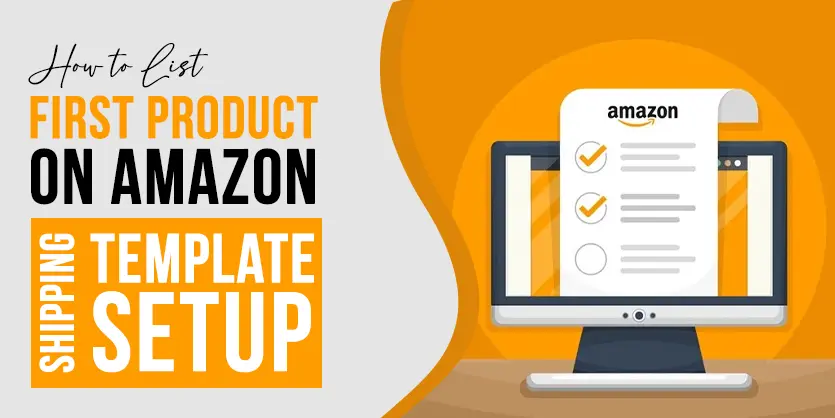For many Amazon FBA sellers, building a profitable business can be a challenging and frustrating experience. Despite your best efforts, you may find yourself struggling to overcome various obstacles, such as product research, marketing, and policy compliance. Fortunately, with the right guidance and strategies, it’s possible to avoid common mistakes that can derail your Amazon FBA business. In this blog post, we’ll share some tips and insights on how to overcome these challenges and achieve success as an Amazon FBA seller.
Who Makes These Mistakes?

There are many potential pitfalls in the Amazon FBA business. You might wonder, who makes these mistakes? Well, anyone who is involved in the FBA business can make mistakes, whether they are beginners or experienced sellers. But in general, common mistakes can be made by:
- New sellers who lack the necessary experience to navigate the Amazon platform and run an e-commerce business, which can lead to difficulties in creating effective product listings and gaining visibility in the marketplace.
- Sellers who haven’t conducted proper research may end up selling products that are not profitable, in low demand, or have high competition, which can result in low sales and revenue.
- Sellers without a clear plan or strategy may lack direction, and their business may not be structured to achieve long-term success.
- Sellers who don’t pay attention to the details, such as customer service, product quality, and order fulfillment, can negatively impact their reputation and lose customers.
- Sellers who don’t keep track of their inventory can run out of stock, miss out on sales opportunities, and damage their relationship with customers.
- Sellers who don’t stay up to date with changes in Amazon’s policies or trends in the marketplace may miss out on new opportunities or face penalties for non-compliance.
How Do The Mistakes Occur?

Amazon FBA mistakes can occur due to a variety of factors. One common cause is the complex and ever-changing nature of the Amazon platform. Sellers need to keep up with the latest policies, algorithms, and trends. Even with the best planning and technology, mistakes can still occur due to oversight or miscommunication. However, the most common reasons are:
- Lack of Knowledge: Sellers who lack knowledge about the Amazon platform and e-commerce business may face difficulties with managing their store, choosing products to sell, and marketing their products effectively.
- Rush to get the products listed: Sellers who rush to list their products on Amazon without properly researching the market, evaluating competition, or optimizing their listings may face low sales and lost revenue.
- Insufficient Planning: Sellers who fail to create a clear plan and strategy for their Amazon business may struggle to achieve long-term success with issues in product sourcing, pricing, marketing, and inventory management.
- Misunderstanding Amazon’s Policies: Sellers who misunderstand Amazon’s strict policies and guidelines may inadvertently violate them and face negative consequences such as account suspension or closure.
- Poor Product Listings: Poorly optimized or incomplete product listings can result in lost sales due to missing or unclear product information, low-quality images, and inaccurate pricing.
- Shipping and Logistics Issues: Issues with fulfillment such as late deliveries, damaged products, and poor communication with customers can negatively impact a seller’s reputation and customer satisfaction.
- Ignoring Customer Feedback: Ignoring or dismissing customer feedback can lead to lost sales and negative reviews. Sellers who listen to and address customer concerns can build trust and loyalty and improve their overall reputation on the platform.
Common Mistakes Made by Sellers
Now that you are aware of the overview, let’s focus on the most common mistakes made by Amazon sellers. Selling on Amazon can be a highly profitable business venture, but it’s not without its challenges. With millions of sellers competing for the attention of Amazon’s vast customer base, it can be difficult to stand out from the crowd and achieve sustained success on the platform. As with any business, there are common mistakes that new and experienced sellers alike can make that can negatively impact their success on the platform.
1. Poor Product Research
One of the most common mistakes that people make is not doing proper product research. Many new sellers often select a product that they like without considering if it’s profitable or not. This mistake can cost you a lot of money, time, and effort. Before selecting a product, you need to conduct proper research to ensure that there is demand for it and that you can sell it at a profitable price.

To avoid making this mistake you should always –
✔Research and analyze the demand for products
✔Identify your target audience
✔Use tools such as Jungle Scout or Helium 10 for product research
✔Ensure a good profit margin and a low competition rate
✔Avoid products that are restricted or prohibited
2. Not Understanding Amazon’s Policies
Another common mistake is not understanding Amazon’s policies. Amazon has strict policies for its sellers, and violating them can result in your account being suspended or even banned. Make sure to read and understand Amazon’s policies, especially their terms of service, before you start selling on their platform. Some common policy violations include:
- Listing prohibited products – can be counterfeit items, hazardous materials, and restricted products.
- Failing to meet performance metrics such as order defect rate, cancellation rate, and late shipment rate.
- Manipulating reviews by paying for fake reviews or telling customers to leave positive reviews.
- Violating intellectual property rights such as trademarks, copyrights, or patents

To avoid this mistake, it’s essential to –
✔Read and comprehend Amazon’s terms of service
✔Regularly check Amazon’s Seller Central for updates
✔Join Amazon seller forums and communities
3. Poor Quality Products
The third mistake is delivering poor-quality products. Your product quality is one of the primary factors that determine the success of your FBA business. Poor-quality products can lead to negative reviews and returns, which can severely impact your overall sales. Ensure that the products you source are of high quality, and conduct thorough quality checks before sending them to Amazon’s warehouses. Providing quality products enhances customer satisfaction, and this can help in boosting your sales and increase your customer base.

To avoid delivering poor-quality products, here are some tips:
✔Source products from reputable suppliers
✔Conduct thorough quality checks
✔Respond promptly to any customer complaints or feedback
✔Provide clear and accurate product descriptions and images
4. Not Optimizing Your Listings
Optimizing your listings is essential to improving your sales. Many sellers overlook the importance of optimizing their product titles, descriptions, and images, which can lead to a loss of sales. Optimizing your listings involves using the right keywords and providing attractive descriptions of your product to catch the attention of potential buyers. This can increase your product visibility, enhance customer engagement, and ultimately boost your sales.

To avoid the mistake of not optimizing your listings, here are some tips:
✔Use relevant keywords in titles and descriptions
✔Provide accurate product descriptions and images
✔Keep your product pricing updated
✔Use Amazon’s A+ content
✔Monitor your listing’s performance
5. Poor Inventory Management
Poor inventory management is another common mistake that Amazon FBA sellers make. Poor inventory management refers to the ineffective handling, tracking, and control of a brand’s inventory or stock. It can be caused by various factors, such as –
- Running out of stock – By running out of stock, you can lose sales, damage your reputation, and even lose your Amazon ranking.
- Overstocking – Again, overstocking can lead to higher storage fees, increased risk of product damage or loss, and slow-moving inventory that ties up capital.
- Storing products improperly – This can lead to product damage or loss, which can result in negative customer experiences and lost sales.

To avoid this mistake, it’s crucial to implement effective inventory management practices such as –
✔Accurately forecast demand for your products
✔Monitor inventory levels regularly and restock as needed
✔Optimize your storage space
✔Implement an Inventory Management System
6. Poor Customer Service
This mistake can cause serious consequences for your Amazon FBA business. Customers who have negative experiences with your business are likely to leave negative reviews, which can harm your seller reputation and ultimately impact your sales. Some common mistakes in customer service include:
- A late response to customer inquiries: Customers expect quick responses to their inquiries, and failing to do so can result in negative feedback.
- Ignoring customer complaints or feedback: This issue can lead to negative reviews, lost sales, and a damaged reputation.
- Not providing accurate product information: If you don’t provide accurate information about your product, this can lead to unhappy customers and increased return rates.

To avoid this mistake –
✔Provide excellent customer service at all times
✔Be responsive and communicative with your customers
✔Ensure that your product listings are accurate and descriptive
✔Ensure that your packaging and shipping processes are efficient
✔Follow up with customers after their orders have been fulfilled
7. Overpricing or Underpricing Products
Overpricing your products can turn off potential buyers and make them look for similar products at a lower price, ultimately leading to lost sales. As a result, you will lose potential customers. Overpricing can happen when a seller overestimates the value of their products or fails to research the competition.
On the other hand, underpricing your products can devalue your brand and leave you with minimal profit margins. Ultimately you will face difficulty maintaining inventory levels, and a perception of lower quality. Underpricing can happen when a seller underestimates the value of their products or fails to consider all costs, such as shipping and storage fees.

Setting the right price for your products is crucial for maximizing profits and staying competitive in the marketplace. To avoid this mistake always –
✔Identify your competitors’ pricing
✔Calculate your costs accurately
✔Regularly review and adjust your prices
Final Thoughts
Building a successful Amazon FBA business takes time and effort, but by avoiding these mistakes and prioritizing best practices, you can achieve your business goals. By avoiding the common mistakes we’ve discussed in this post, and implementing effective strategies for product sourcing, pricing, marketing, and customer service, you can increase your chances of success on the platform. With the right mindset and approach, you can turn your Amazon selling business into a profitable and sustainable venture.
We hope this post has been helpful in guiding you toward that goal, and wish you the best of luck in your Amazon selling journey. For more information on Amazon selling, don’t hesitate to contact us for more details. If you have any queries about selling on Amazon, feel free to comment below.



